An Improved Range-Searching Initial Orbit-Determination Method and Correlation of Optical Observations for Space Debris
Abstract
:1. Introduction
2. Observations and Methods
2.1. Angle Observations
2.2. The Improvement of the RS IOD Method and the Association Method
2.2.1. The Improvement of the RS IOD Method
| Algorithm 1: The iteration steps of IOD computation. |
| For i = 1, 2, 3, n/2, i = i + step (default 1), n is the epoch number. For j = 2/n,n, j = j + step (default 1) Determine the used observations and . Observations at the other epochs of the current arc are used as a discriminator. Solving the Lambert problem to get a set of orbit elements. If the residuals are less than the threshold preset, that means a possible solution. Then, a set of elements is added to the result sum. End End |
2.2.2. The Association Method
- (1)
- Determine the two sets of initial orbit elements for conducting the association;
- (2)
- The two tracks are propagated to the intermediate moments of the two by using the analytical method of orbit propagation. This allows for the correlation of the two tracks;
- (3)
- After propagation, the differences between the two initial tracks are calculated in the along-track, cross-track, and radial directions (ACR). The semimajor axis (SMA) of the two initial tracks is then adjusted based on the differences in the along-track direction. The tracks are repropagated, and the differences in the ACR directions of the two initial tracks are recalculated;
- (4)
- The final ACR difference is judged after applying multiple corrections in succession, and, if it is less than the preset threshold, the two tracks are considered to be from the same object. Otherwise, they are from different objects.
3. Results
3.1. IOD of Arcs from LEO Objects
3.2. IOD of Arcs from GEO Objects
3.2.1. Changchun GEO EA
3.2.2. FocusGEO
3.3. IOD of Observations of Space Debris Related to the COSMOS 1408 Satellite
3.3.1. Background
3.3.2. IOD of Unmatched Arcs of Space Objects
4. Discussion
Author Contributions
Funding
Institutional Review Board Statement
Data Availability Statement
Conflicts of Interest
References
- Li, M.; Gong, Z.; Liu, G.Q. Frontier technology and system development of space debris surveillance and active removal. Chin. Sci. Bull. 2018, 63, 2570–2591. [Google Scholar] [CrossRef]
- Gong, Z.; Song, G.; Li, M.; Wang, J.; Huang, Y. Long-term Sustainability of Space Activities: From Space Traffic Management to Space Environment Governance—Review on the 683rd Xiangshan Science Conference. Space Debris Res. 2021, 21, 5–12. (In Chinese) [Google Scholar]
- Tang, J.S.; Cheng, H. The origin, status and future of space debris. Physics 2021, 50, 317–323. [Google Scholar]
- NASA. NASA’s Effort to Mitigate the Risks Posed by Orbital Debris; Report No. IG-21-011; 27 January 2021; NASA: Washington, DC, USA, 2021.
- Anz-Meador, P.D. Orbital Debris Quarterly News; National Aeronautics and Space Administration: Washington, DC, USA, 2020; Volume 24.
- Li, G.; Liu, J.; Cheng, H. Space Debris Laser Ranging Technology and Applications. Space Debris Res. 2020, 20, 40–48. (In Chinese) [Google Scholar]
- Long, M.; Deng, H.; Zhang, H.; Wu, Z.; Zhang, Z.; Chen, M. Development of Multiple Pulse Picosecond Laser with 1 kHz Repetition Rate and Its Application in Space Debris Laser Ranging. Acta Optica Sin. 2021, 483, 155–162. (In Chinese) [Google Scholar]
- Zhang, D. Dim Space Target Detection Technology Research Based on Ground-Based Telescope. Ph.D. Thesis, University of Chinese Academy of Sciences, Beijing, China, 2020. [Google Scholar]
- Fu, Q.; Shi, H.; Wang, C.; Liu, Z.; Li, Y.; Jiang, H.-L. Research on New Technology of Photoelectric Detection for Space-Based Space Debris. Space Debris Res. 2020, 20, 49–55. (In Chinese) [Google Scholar]
- Sun, R.; Zhao, C. Optical Survey Technique for Space Debris in GEO. Prog. Astron. 2012, 30, 394–410. [Google Scholar]
- Cowardin, H. Orbital Debris Quarterly News; National Aeronautics and Space Administration: Washington, DC, USA, 2022; Volume 26.
- Hu, J.; Hu, S.; Liu, J.; Chen, X.; Du, J. Simulation Analysis of Space Debris Observation Capability of Multi-Optoelectronic Equipment. Acta Opt. Sinic. 2020, 468, 29–35. (In Chinese) [Google Scholar]
- Liu, L. Study on the Initial Orbit Determination of Space Targets with Space-Based Surveillance. Ph.D. Thesis, Graduate School of National University of Defense Technology, Changsha, China, 2010. [Google Scholar]
- Lei, X.; Li, Z.; Du, J.; Chen, J.; Sang, J.; Liu, C. Identification of uncatalogued LEO space objects by a ground-based EO array. Adv. Space Res. 2021, 67, 350–359. [Google Scholar] [CrossRef]
- Chen, L.; Liu, C.; Li, Z.; Sun, J.; Kang, Z.; Deng, S. Non-Cooperative Common-View Observation of LEO Space Objects and Initial Orbit Determination. Acta Optica Sin. 2021, 496, 162–167. (In Chinese) [Google Scholar]
- Pastor, A.; Sanjurjo-Rivo, M.; Escobar, D. Initial orbit determination methods for track-to-track association. Adv. Space Res. 2021, 68, 2677–2694. [Google Scholar] [CrossRef]
- Feng, Z.; Yan, C.; Qiao, Y.; Xu, A.; Wang, H. Effect of Observation Geometry on Short-Arc Angles-Only Initial Orbit Determination. Appl. Sci. 2022, 12, 6966. [Google Scholar] [CrossRef]
- Mancini, M. An Analysis on the Application of Algebraic Geometry in Initial Orbit Determination Problems. Master’s Thesis, Georgia Institute of Technology, Atlanta, GA, USA, 2022. [Google Scholar]
- Russell, R.P. On the solution to every Lambert problem. Celest. Mech. Dyn. Astron. 2019, 131, 50. [Google Scholar] [CrossRef]
- Escobal, P.R. Methods of Orbit Determination; Wiley: New York, NY, USA, 1965. [Google Scholar]
- Vallado, D.A.; McClain, W.D. Fundamentals of Astrodynamics and Applications. In Proceedings of the Tutorial Lectures at the 4th ICATT, Madrid, Spain, 30 April 2010. [Google Scholar]
- Zhang, P.; Sang, J.; Pan, T.; Li, H. Initial 0rbit Determination Method Based on Range Searching for LEO Space Debris. Spacecr. Eng. 2017, 26, 22–28. (In Chinese) [Google Scholar]
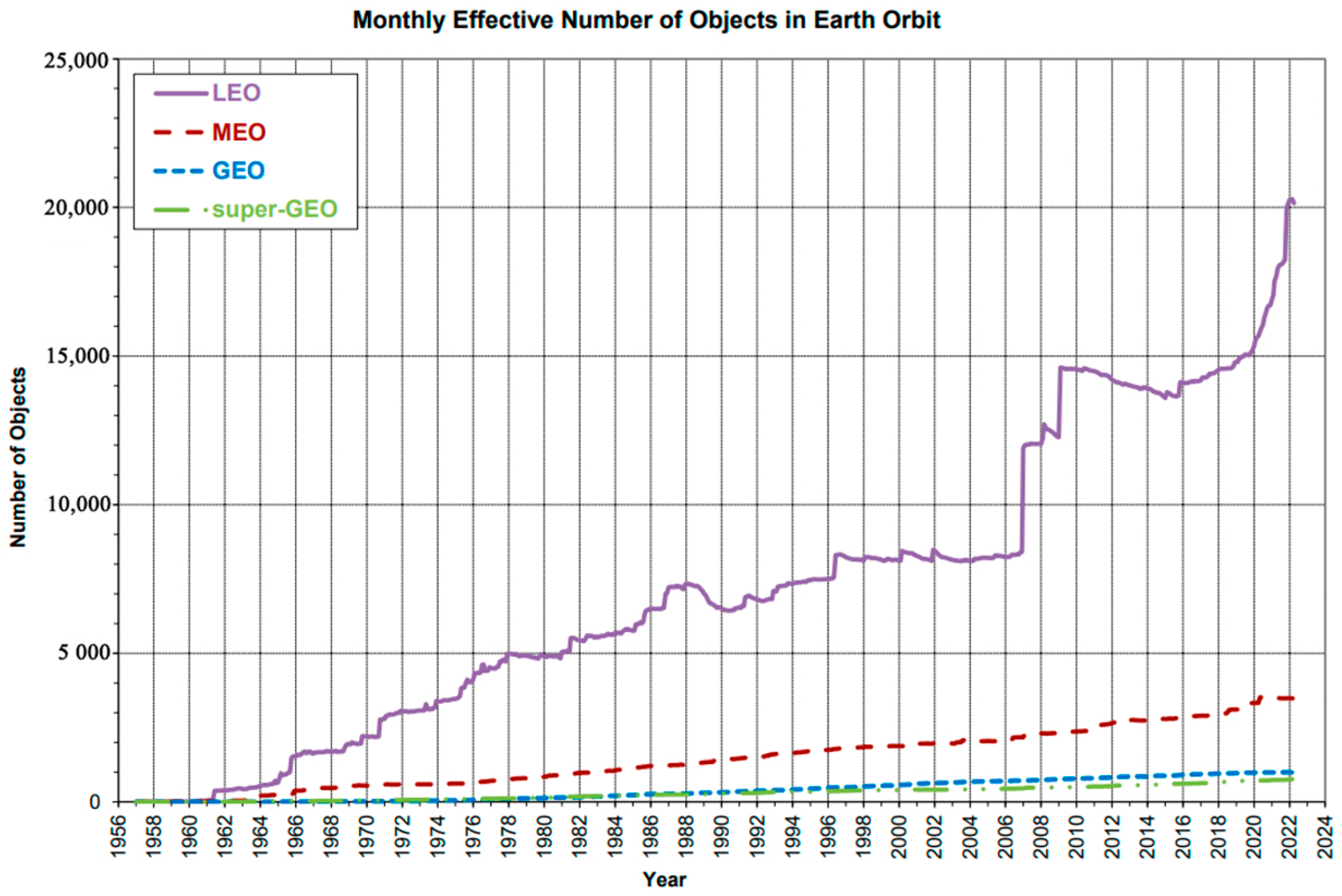
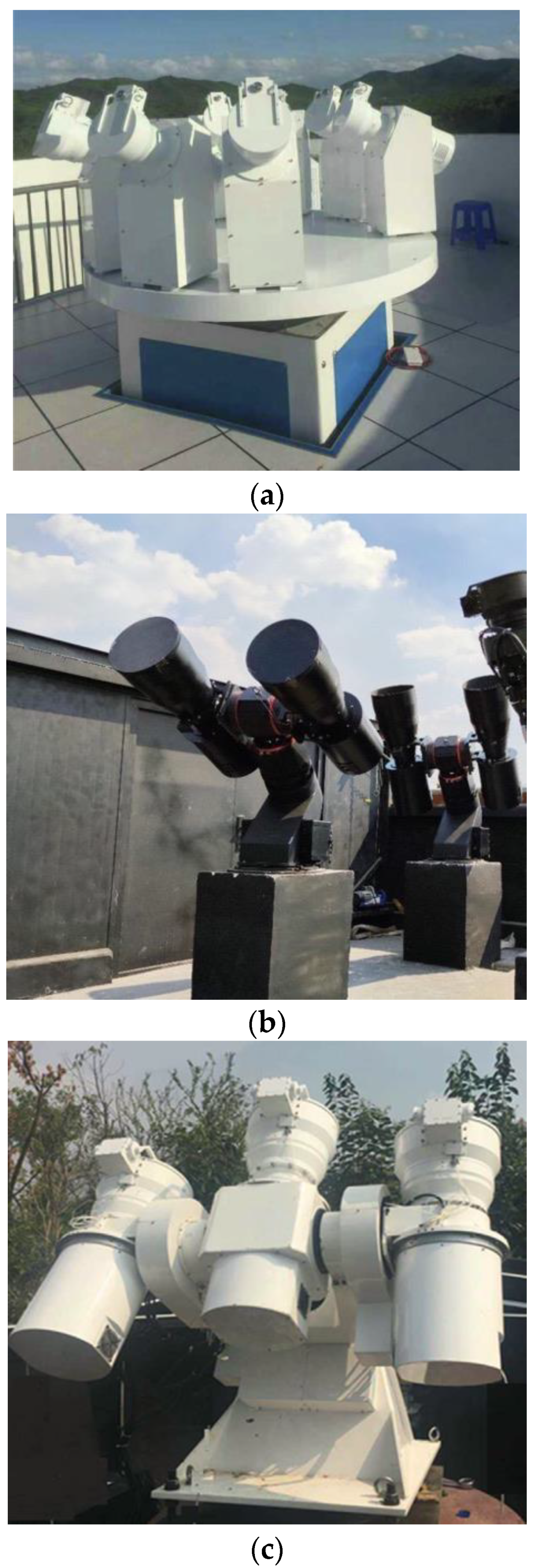
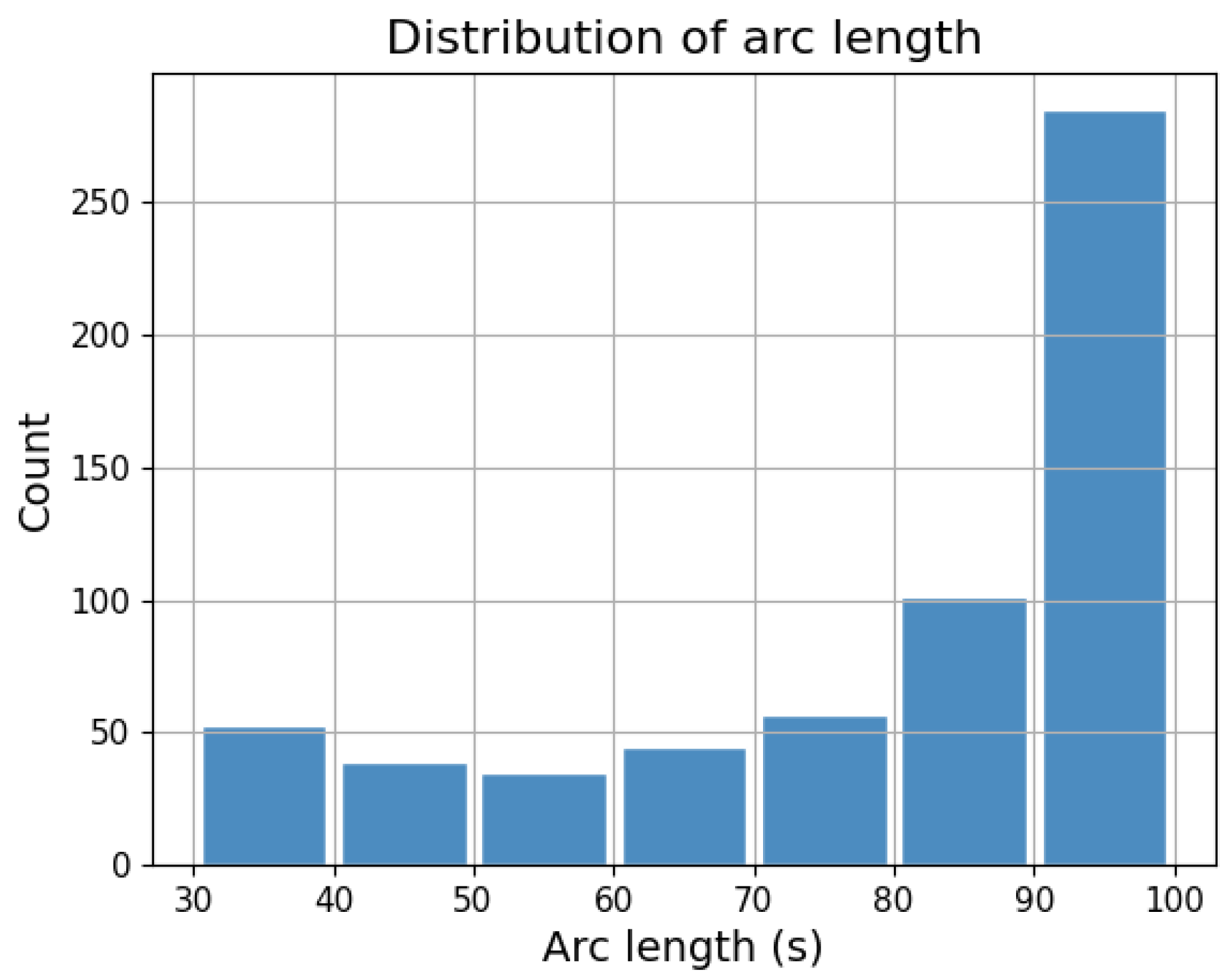

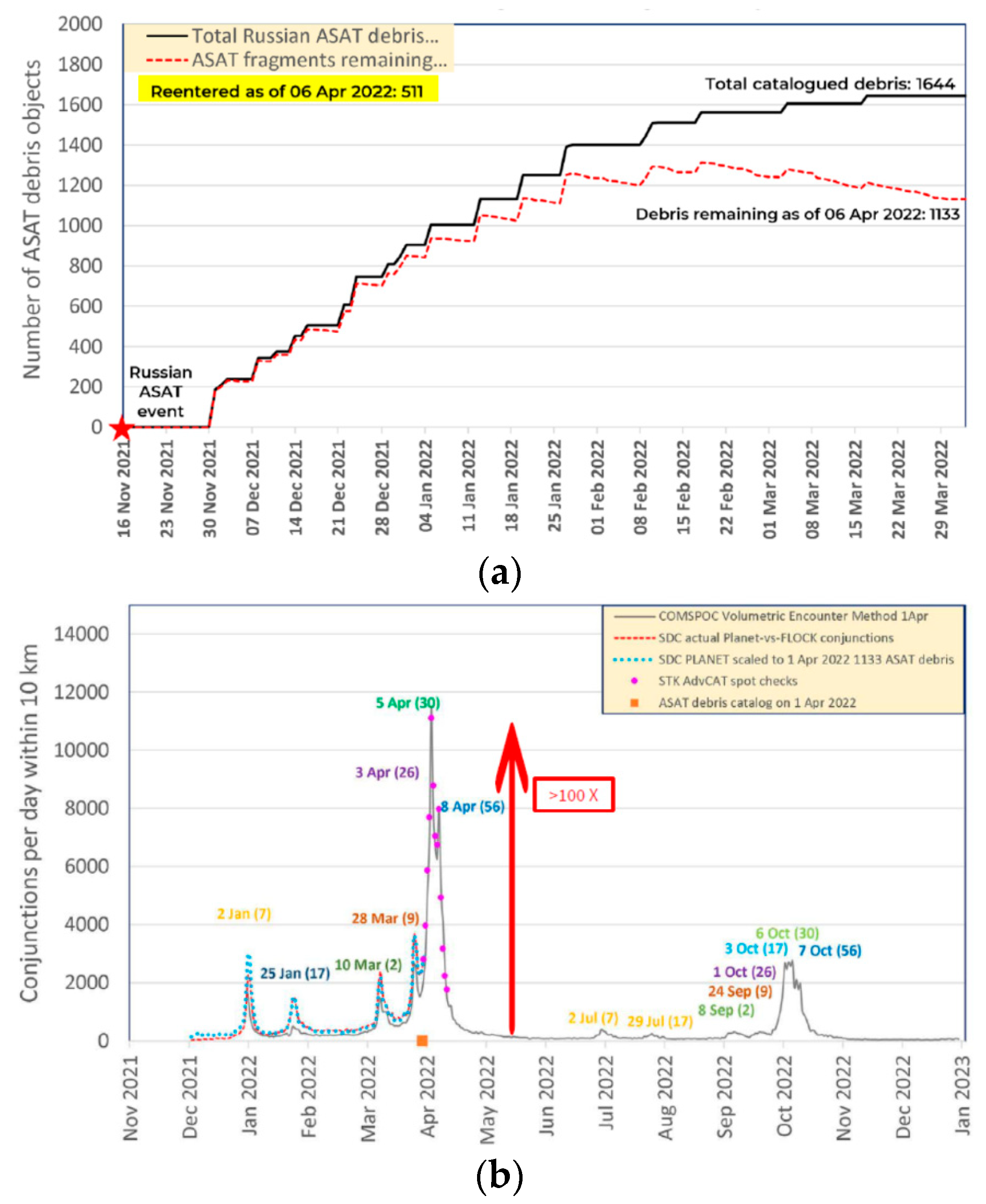
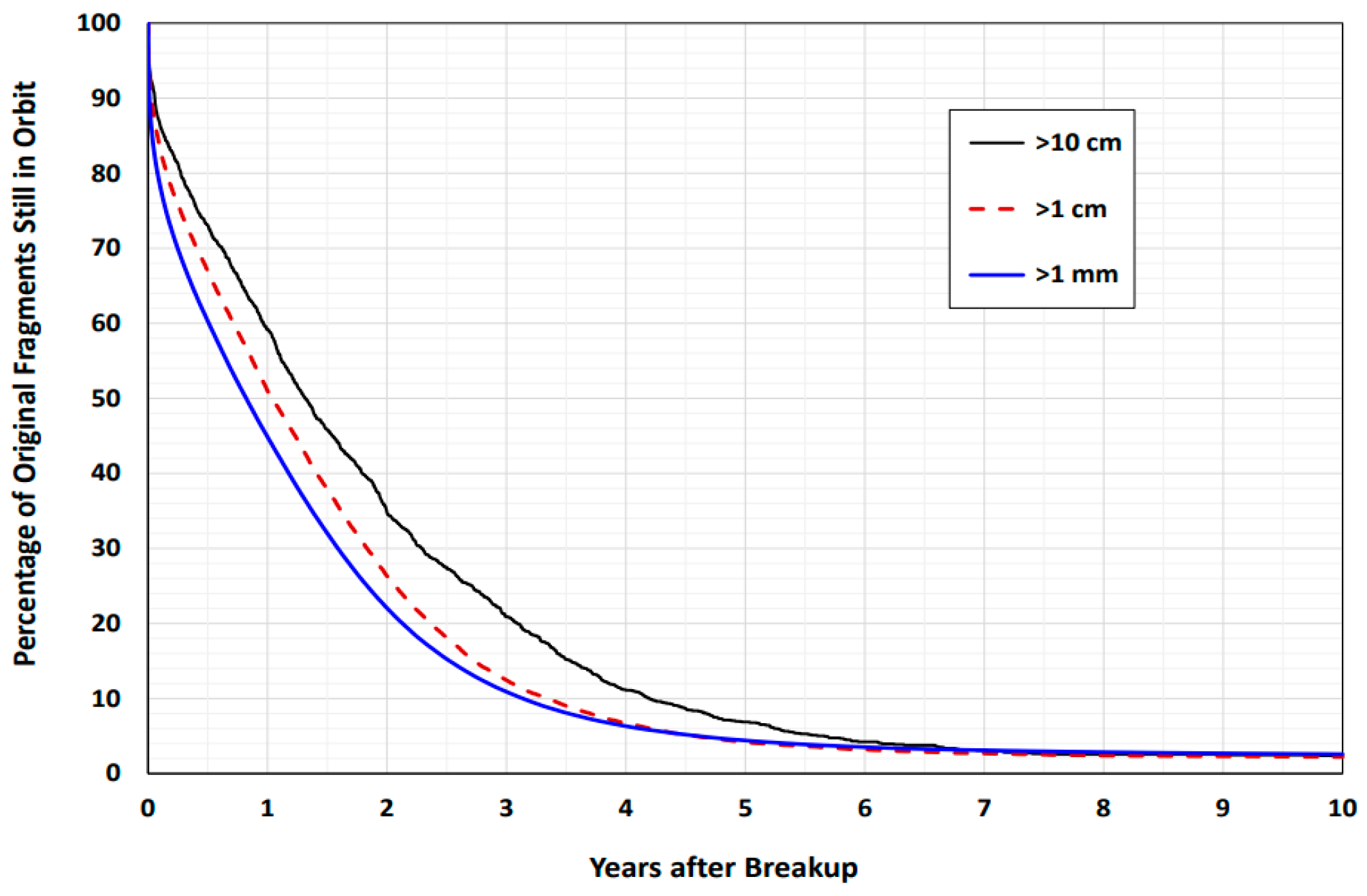
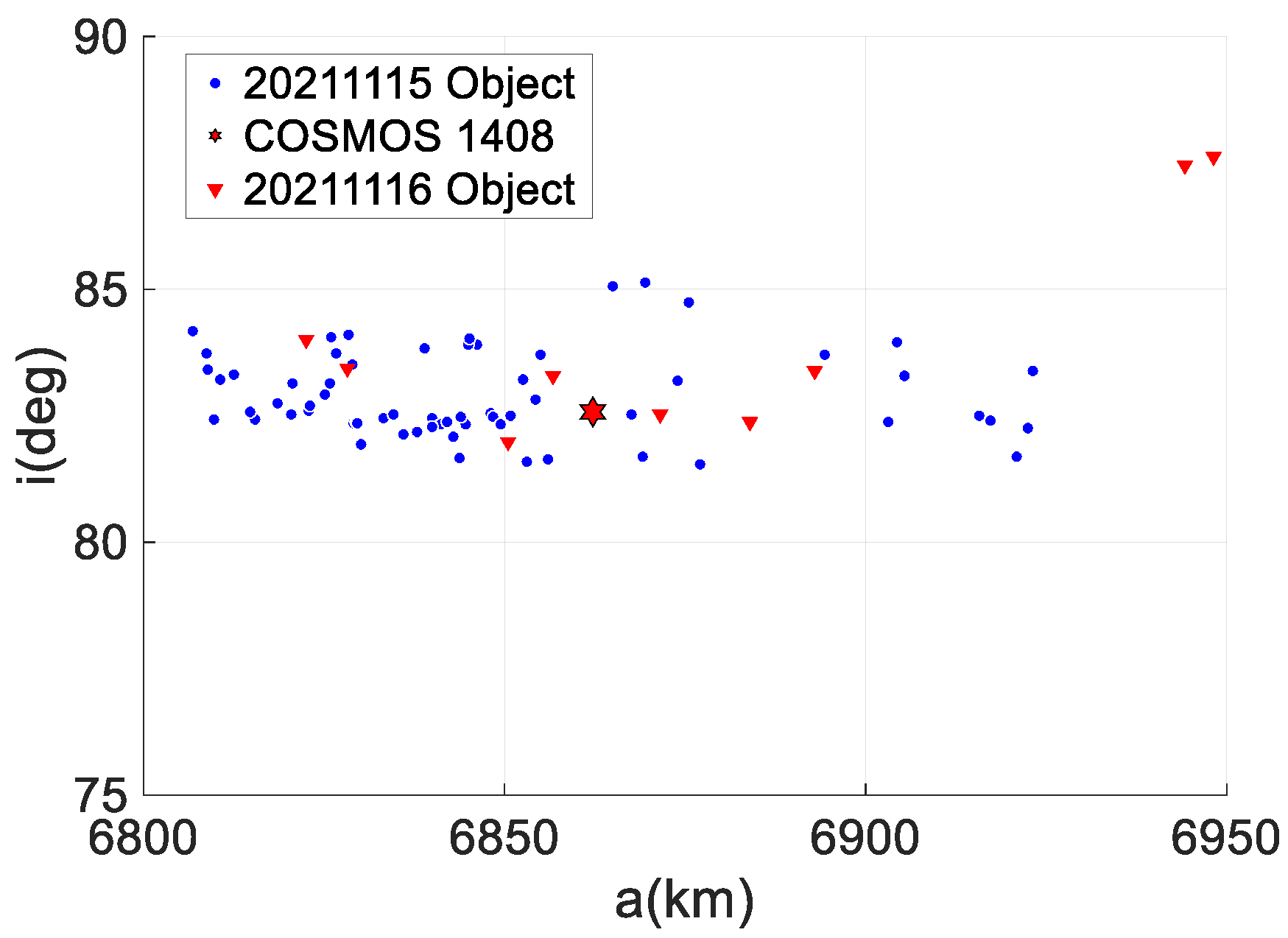
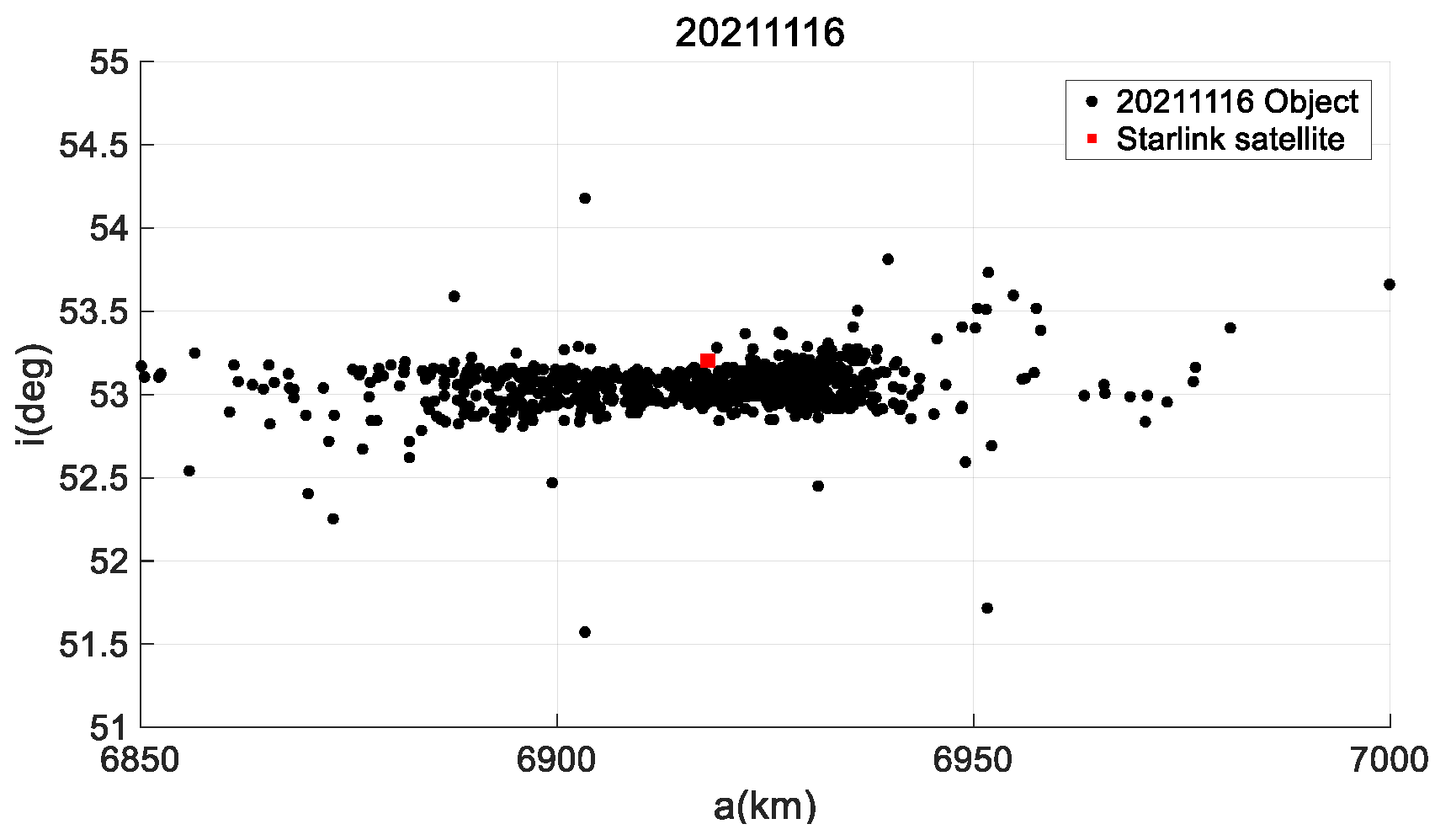
| Name | Changchun GEO Telescopes | Changchun LEO Telescopes | FocusGEO |
|---|---|---|---|
| Number of telescopes | 4 | 8 | 3 |
| Telescope diameter | 280 mm | 150 mm | 180 mm |
| Focus length | 324 mm | 150 mm | 220 mm |
| CCD | 4096 × 4096 | 3056 × 3056 | 1528 pixel × 1528 pixel |
| FOV | 6.5° × 6.5° | 14.1° × 14.1° | 9.5° × 9.5° |
| Pixel scale of CCD | 5.7″/pixel | 16.6″/pixel | 22.4″/pixel |
| Angle observation noise | 2.4″ | 5.9″ | 3″ |
| Detectability | 16.5 mag | 10.5 mag | 15 mag |
| Date | Number of the Arcs | Number of Arcs from Known Objects | Rate | Number of Known Objects |
|---|---|---|---|---|
| 24 August 2017 | 4100 | 3458 | 84.34% | 1299 |
| 25 August 2017 | 1626 | 1396 | 85.85% | 594 |
| 26 August 2017 | 4894 | 4163 | 85.06% | 1587 |
| Errors of SMA | Number | Rate |
|---|---|---|
| <100 km | 6752 | 90.17% |
| <50 km | 6099 | 81.45% |
| <30 km | 5150 | 68.78% |
| <20 km | 4088 | 54.59% |
| <10 km | 2294 | 30.64% |
| <5 km | 1143 | 15.26% |
| Date | Number of Arcs | Number of Matched Arcs | Rate (%) |
|---|---|---|---|
| 6 February 2021 | 25,714 | 17,369 | 67.50 |
| 7 February 2021 | 15,513 | 11,302 | 72.86 |
| 8 February 2021 | 14,250 | 10,960 | 76.91 |
| 9 February 2021 | 11,976 | 9355 | 78.11 |
| 10 February 2021 | 16,709 | 12,734 | 76.20 |
| Mean | 16,832 | 12,344 | 74.32 |
| Errors of SMA | Count | Rate |
|---|---|---|
| <100 km | 962 | 70.58% |
| <50 km | 743 | 54.51% |
| <30 km | 546 | 40.06% |
| <10 km | 232 | 17.02% |
| Error (Deg) | Count | Rate |
|---|---|---|
| <1 | 523 | 97.03% |
| <0.5 | 515 | 95.55% |
| <0.2 | 488 | 90.54% |
| <0.1 | 444 | 82.37% |
| SMA Error (km) | Rate (%) | Eccentricity Errors | Rate (%) | Inclination Errors (Deg) | Rate (%) |
|---|---|---|---|---|---|
| <5 | 4.12 | <0.0001 | 21.70 | <0.01 | 11.26 |
| <10 | 8.24 | <0.0005 | 47.80 | <0.03 | 31.32 |
| <30 | 21.15 | <0.001 | 53.02 | <0.05 | 40.66 |
| <50 | 33.24 | <0.005 | 82.42 | <0.1 | 64.29 |
| <100 | 55.49 | <0.01 | 97.53 | <0.2 | 83.79 |
Disclaimer/Publisher’s Note: The statements, opinions and data contained in all publications are solely those of the individual author(s) and contributor(s) and not of MDPI and/or the editor(s). MDPI and/or the editor(s) disclaim responsibility for any injury to people or property resulting from any ideas, methods, instructions or products referred to in the content. |
© 2023 by the authors. Licensee MDPI, Basel, Switzerland. This article is an open access article distributed under the terms and conditions of the Creative Commons Attribution (CC BY) license (https://creativecommons.org/licenses/by/4.0/).
Share and Cite
Lei, X.; Xia, S.; Liu, H.; Wang, X.; Li, Z.; Han, B.; Sang, J.; Zhao, Y.; Luo, H. An Improved Range-Searching Initial Orbit-Determination Method and Correlation of Optical Observations for Space Debris. Appl. Sci. 2023, 13, 13224. https://doi.org/10.3390/app132413224
Lei X, Xia S, Liu H, Wang X, Li Z, Han B, Sang J, Zhao Y, Luo H. An Improved Range-Searching Initial Orbit-Determination Method and Correlation of Optical Observations for Space Debris. Applied Sciences. 2023; 13(24):13224. https://doi.org/10.3390/app132413224
Chicago/Turabian StyleLei, Xiangxu, Shengfu Xia, Hongkang Liu, Xiaozhen Wang, Zhenwei Li, Baomin Han, Jizhang Sang, You Zhao, and Hao Luo. 2023. "An Improved Range-Searching Initial Orbit-Determination Method and Correlation of Optical Observations for Space Debris" Applied Sciences 13, no. 24: 13224. https://doi.org/10.3390/app132413224
APA StyleLei, X., Xia, S., Liu, H., Wang, X., Li, Z., Han, B., Sang, J., Zhao, Y., & Luo, H. (2023). An Improved Range-Searching Initial Orbit-Determination Method and Correlation of Optical Observations for Space Debris. Applied Sciences, 13(24), 13224. https://doi.org/10.3390/app132413224






